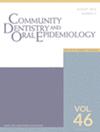Stakeholder Attitudes, Experiences and Perceptions of the New South Wales Primary School Mobile Dental Program
Abstract
Objectives
Tooth decay is a leading cause of total disease burden among Australian children. In 2019, the state government of New South Wales, Australia implemented the Primary School Mobile Dental Program (PSMDP) across five local health districts. Understanding stakeholder satisfaction of the PSMDP is an important measure of quality, to determine appropriateness as relevant to the needs of populations. The aim of the study was to explore parent/caregiver and provider attitudes, experiences, and perceptions of the PSMDP.
Methods
This study reports on the qualitative component of a mixed methods study examining parent/caregiver and provider (oral health staff) experiences of the program. Two of the five local health districts were selected for study sampling. Parents/caregivers were recruited using flyers administered via schools and oral health teams. Interviews were conducted between 2022 and 2023. The interviews lasted 20–60 min, were recorded, and transcribed verbatim. A critical realist lens was applied, and thematic analysis was conducted. Data saturation was achieved, and bias was reduced through member checking, researcher reflexivity, and team triangulation of the data.
Results
In total, 79 individuals (58 parents/caregivers and 21 providers) were interviewed. Analysis revealed six key themes: (1) oral healthcare access, (2) informed consent, (3) parental attendance, (4) rewarding experiences, (5) operational barriers, and (6) communication clarity. The PSMDP promoted oral healthcare access while some parents/caregivers reported informed consent challenges. Providers cited rewarding experiences but face operational barriers including time constraints. Stakeholders diverged on parental attendance at school dental appointments, and most importantly, parents/caregivers requested follow-up communication clarity and coordination, particularly in feedback letters.
Conclusions
Qualitative findings identified generally positive attitudes and experiences with the PSMDP, and implications have been identified that would support the scale-up and sustainability of the PSMDP across the state. Study insights could be useful for similar programs, such as extending the attendance time per child, giving greater consideration to parental involvement, and improving communication and follow-up coordination.


 求助内容:
求助内容: 应助结果提醒方式:
应助结果提醒方式:


